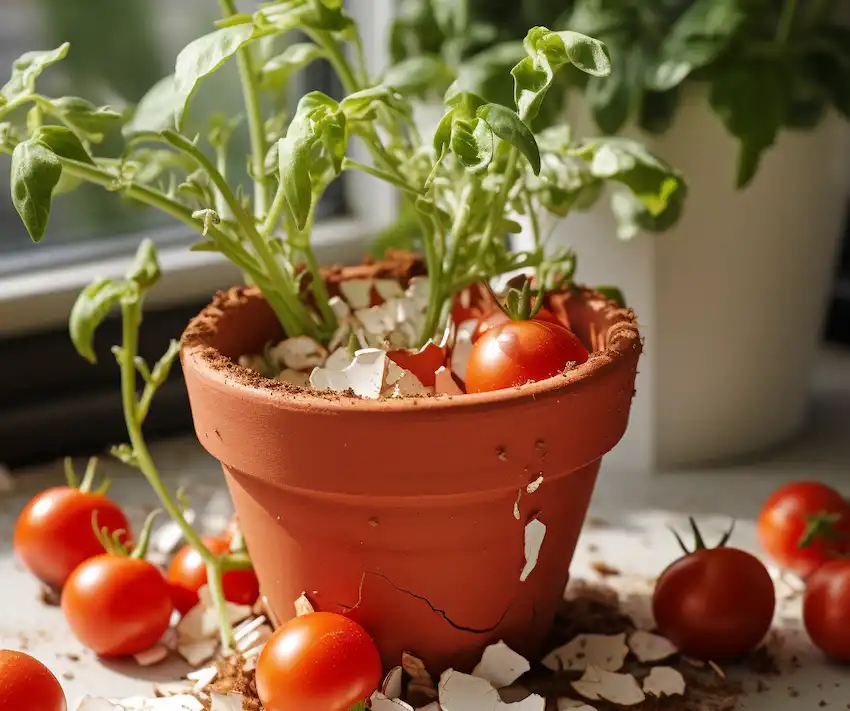Unlocking the Potential of Eggshells in Your Garden
Eggshells are often discarded as kitchen waste, but these common leftovers hold remarkable benefits for gardeners. Rich in essential nutrients and versatile in their uses, eggshells can transform your garden’s health and productivity. Here’s a comprehensive guide on how to utilize eggshells to enhance your gardening efforts.
1. Nutrient-Rich Fertilizer
Eggshells are primarily made of calcium carbonate, an essential mineral for plant growth. Calcium strengthens cell walls, promotes robust root development, and helps prevent issues like blossom end rot in tomatoes.
How to Prepare:
- Collect and Rinse: Gather used eggshells, rinse them thoroughly to remove any egg white or membrane.
- Dry: Air-dry the shells until they become brittle.
- Crush: Crush the eggshells into small pieces or powder using a mortar and pestle or a blender.
- Apply: Sprinkle the crushed eggshells around your plants or mix them into the soil.
This simple addition can improve overall plant health and soil quality.
2. Pest Deterrent
Crushed eggshells can act as a natural barrier to pests like snails, slugs, and caterpillars. The sharp edges deter these crawling insects from reaching your plants.
How to Use:
- Crush Shells: Crush eggshells into small pieces.
- Scatter: Sprinkle the crushed eggshells around the base of your plants, creating a protective barrier.
This method helps keep unwanted pests at bay without resorting to chemical pesticides.
3. Seed Starting Pots
Eggshells are perfect for biodegradable seed starting pots. They are easy to handle and decompose naturally, enriching the soil with nutrients.
How to Use:
- Prepare Shells: Collect eggshell halves.
- Fill: Add potting soil to each half-shell.
- Sow Seeds: Plant seeds in the soil.
- Stabilize: Place the filled shells in an egg carton or similar container.
- Transplant: When seedlings are ready, crush the eggshell and plant the entire shell into the garden.
The eggshell will decompose, providing additional nutrients to the growing plant.
4. Soil Amendment
Eggshells contribute magnesium and potassium, alongside calcium, to the soil. Mixing crushed eggshells into your soil improves its structure and nutrient content.
How to Use:
- Crush Shells: Crush eggshells into fine pieces.
- Mix: Incorporate the crushed eggshells into your soil before planting.
This amendment supports soil health and plant growth.
5. Compost Additive
Adding eggshells to your compost pile helps balance the acidity of other kitchen scraps, creating a more neutral pH and aiding decomposition.
How to Use:
- Prepare Shells: Rinse and crush eggshells.
- Add to Compost: Mix the crushed shells into your compost pile.
Eggshells enrich the compost with calcium and other nutrients.
6. Natural pH Adjuster
Crushed eggshells can raise the pH level of acidic soils, creating a more alkaline environment suitable for plants that thrive in less acidic conditions.
How to Use:
- Crush Shells: Crush eggshells into a fine powder.
- Apply: Mix the powder into your garden soil to adjust the pH.
This method is particularly useful for soils that are too acidic for optimal plant growth.
7. Tomatoes and Peppers
Tomatoes and peppers benefit greatly from the calcium provided by eggshells, which helps prevent blossom end rot and other calcium-related deficiencies.
How to Use:
- Crush Shells: Crush eggshells into small pieces or powder.
- Add to Soil: Mix the eggshells into the planting hole when planting or transplanting tomatoes and peppers.
This application ensures a steady supply of calcium throughout the growing season.
Final Thoughts
Eggshells are more than just kitchen waste—they are a valuable resource for your garden. From boosting soil nutrients to deterring pests, these often-overlooked remnants can significantly enhance your gardening efforts. Next time you crack an egg, remember to save those shells and give them a second life in your garden.
For additional tips on making the most of your garden’s natural resources, explore more gardening techniques and sustainable practices.

